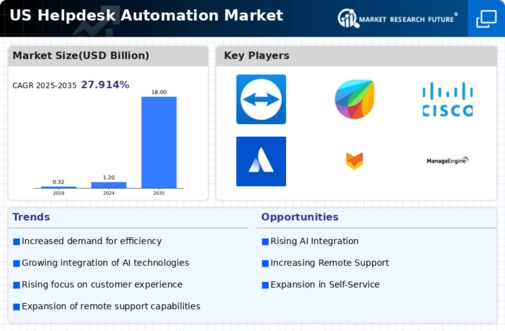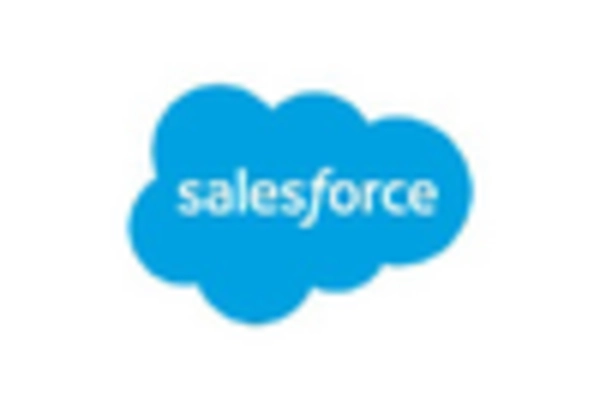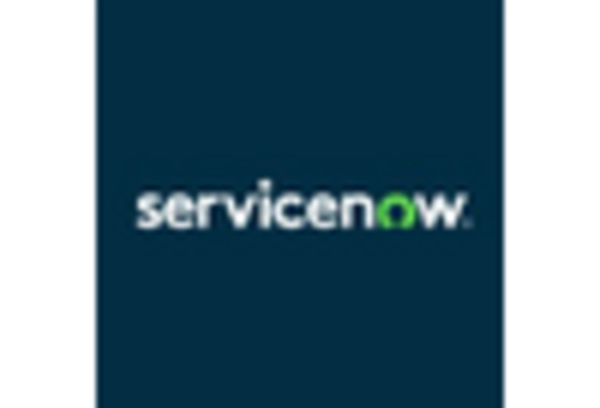Cost Reduction Initiatives
Cost reduction initiatives are a driving force behind the growth of the helpdesk automation market. Organizations are under constant pressure to minimize expenses while maintaining high service quality. Automation offers a viable solution by reducing the need for extensive human resources in customer support roles. By implementing automated systems, companies can achieve significant savings on labor costs, with estimates suggesting reductions of up to 25%. This financial incentive is particularly appealing to small and medium-sized enterprises (SMEs) that may have limited budgets. Consequently, the helpdesk automation market is likely to see increased adoption as businesses prioritize cost-effective solutions to enhance their operational efficiency.
Rising Customer Expectations
Rising customer expectations are significantly influencing the helpdesk automation market. Today's consumers demand quick and efficient support, often expecting immediate responses to their inquiries. This shift in consumer behavior compels organizations to adopt automation solutions that can meet these heightened expectations. The ability to provide 24/7 support through automated systems is becoming a necessity rather than a luxury. Companies that fail to adapt may risk losing customers to competitors who offer superior service. As a result, the helpdesk automation market is likely to expand as businesses seek to enhance their customer service capabilities and maintain customer loyalty in an increasingly competitive landscape.
Integration of Advanced Technologies
The integration of advanced technologies is a pivotal driver in the helpdesk automation market. The incorporation of machine learning, natural language processing, and chatbots into helpdesk systems is transforming customer interactions. These technologies enable organizations to provide faster and more accurate responses to customer inquiries. For instance, the use of AI-driven chatbots can handle up to 70% of routine queries, freeing human agents to focus on more complex issues. This shift not only enhances customer satisfaction but also optimizes resource allocation. As businesses increasingly invest in these technologies, the helpdesk automation market is poised for substantial growth, with projections indicating a potential market value exceeding $10 billion by 2027.
Focus on Enhanced Analytics and Reporting
The focus on enhanced analytics and reporting capabilities is emerging as a crucial driver in the helpdesk automation market. Organizations are increasingly recognizing the value of data-driven decision-making in improving customer service. Advanced analytics tools integrated into helpdesk automation systems allow businesses to track performance metrics, customer satisfaction levels, and response times. This data can inform strategic adjustments and optimize service delivery. As companies strive to leverage insights for continuous improvement, the demand for sophisticated analytics features within helpdesk automation solutions is expected to rise. This trend may lead to a more competitive landscape, as organizations seek to differentiate themselves through superior data utilization.
Growing Demand for Operational Efficiency
The helpdesk automation market is experiencing a notable surge in demand for operational efficiency. Organizations are increasingly recognizing the need to streamline their customer support processes to enhance productivity. By automating repetitive tasks, companies can allocate resources more effectively, leading to improved service delivery. In fact, studies indicate that businesses utilizing helpdesk automation solutions can reduce operational costs by up to 30%. This trend is particularly pronounced in sectors such as IT and telecommunications, where rapid response times are critical. As organizations strive to maintain a competitive edge, the adoption of automation tools is likely to continue rising, thereby propelling the growth of the helpdesk automation market.

















Leave a Comment